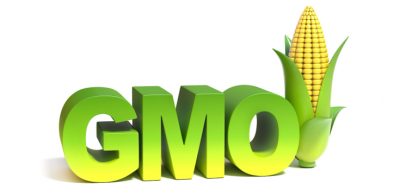Are GMOs Good for Us?
Chances are when shopping at a grocery store, you have seen labels on foods that say GMO free, and though you may think that the acronym has a negative connotation, you may not actually know its meaning or significance. GMO stands for genetically modified organiss and it means that it is a plant that has been genetically modified by scientists and would otherwise not exist in nature.
Currently, GMOs are a controversial topic within the United States health department because although they may be potentially beneficial to us, they have harmful chemical origins.
There are many ways that GMOs make farming easier and safer. One example is Monsanto’s Roundup Ready crops. In 1996, Monsanto released Roundup Ready crops into the farming world. Roundup kills weeds down to the root, making it very effective. In fact, it is so effective that over time with repeated use, it kills the soil by decreasing the nitrogen needed for plants to grow. These Roundup Ready crops are resistant to the chemical in Roundup, glyphosate, allowing farmers to spray the chemicals over the crops without halting their growth. Therefore, farmers can spend less time protecting crops against weeds and disease. Roundup Ready crops are one of the examples of how GMOs make farming much easier and cheaper. GMO crops have also been modified to be resistant to pests that halt their growth. Consumer Perceptions of GMOs explains how GMO crops can be insect-resistant: “Insect resistance is known as Bacillus thuringiensis (Bt), the bacterial source of a protein that is toxic to insects and protects crops from pest damage; as technology has grown to include resistance to additional pests such as corn rootworm and corn earworm, so has adoption of Bt crops.” GMO crops that are resistant to pests avoid the use of pesticides that kill the local ecosystem.
In addition to being resistant to chemicals and pests, GMO crops have consumer benefits. GMOs crops have been genetically modified to taste better, look better and last longer. The website Consumers Perception of Genetically Modified Organisms illustrates how GMOs first began: “Genetically engineered (GE)4 or genetically modified (GM) foods, or those that contain some genetically modified organisms (GMOs), were introduced to the US market and appeared on supermarket shelves in 1994 with the Flavr Savr tomato. The FDA approved the method by Calgene of inserting a gene that prevents buildup of an enzyme that would otherwise cause softening in fruit, allowing the commercially sold Flavr Savr tomato to have a longer shelf life than conventional tomatoes”. The Flavr Savr Tomato was the first genetically modified organism that was legal to be sold in stores. GMO crops now have many more beneficial traits that may increase the taste or looks of the crops. Scientists now can insert beneficial traits other plants have into a desired plant by isolating the trait desired, inserting the trait into the desired plant, and then incubating the desired trait, to make the new GMO have the desired trait that you want. These traits can make the plant have more vibrant colors, or make them have a stronger taste. There are many more traits you can add to GMOs to make them into the crop you desire.
GMOs also have very major traits that may help save our future. The main potential benefit they have is the potential to end world hunger presently, and in the future. World hunger is one of the main problems the world has currently, and one of the main problems that we would need to tackle in the future. The website Genetically-Modified-Organisms by STIN Harvard university says that “many experts believe that if the human population continues to grow, current methods of farming will not feed everyone”. Our population is currently growing exponentially, and the only way to halt its growth is to have some catastrophic event that would kill off millions of people and solve world hunger. GMO traits now can increase crop yield, and allow farming in more extreme climates. These traits include resistance to drought, resistance to plant viruses, or more amounts of food per crop. By having traits that make it so the plant doesn’t die easily, more crops survive, increasing the number of plants in each harvest. Also, by making it so that each plant is bigger with more food in it, the crop yield is increased. By increasing the amounts of plants grown at a time, we are able to currently feed the entire world by using GMOs.
GMOs have so many other trait benefits outside of being resistant to chemicals that we can use to make a better future. Instead of saying GM-NO, we should say yes to GMOs.



